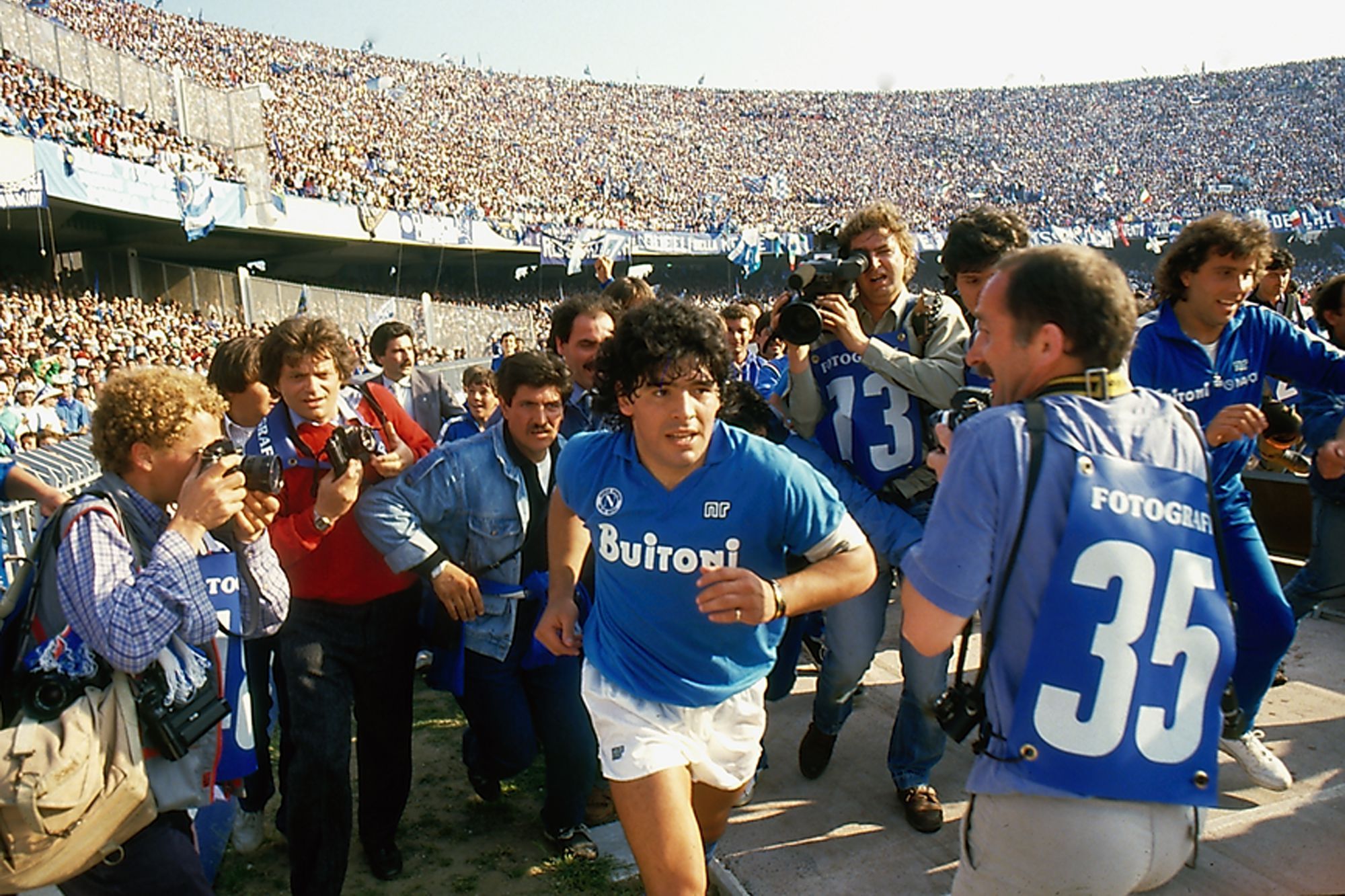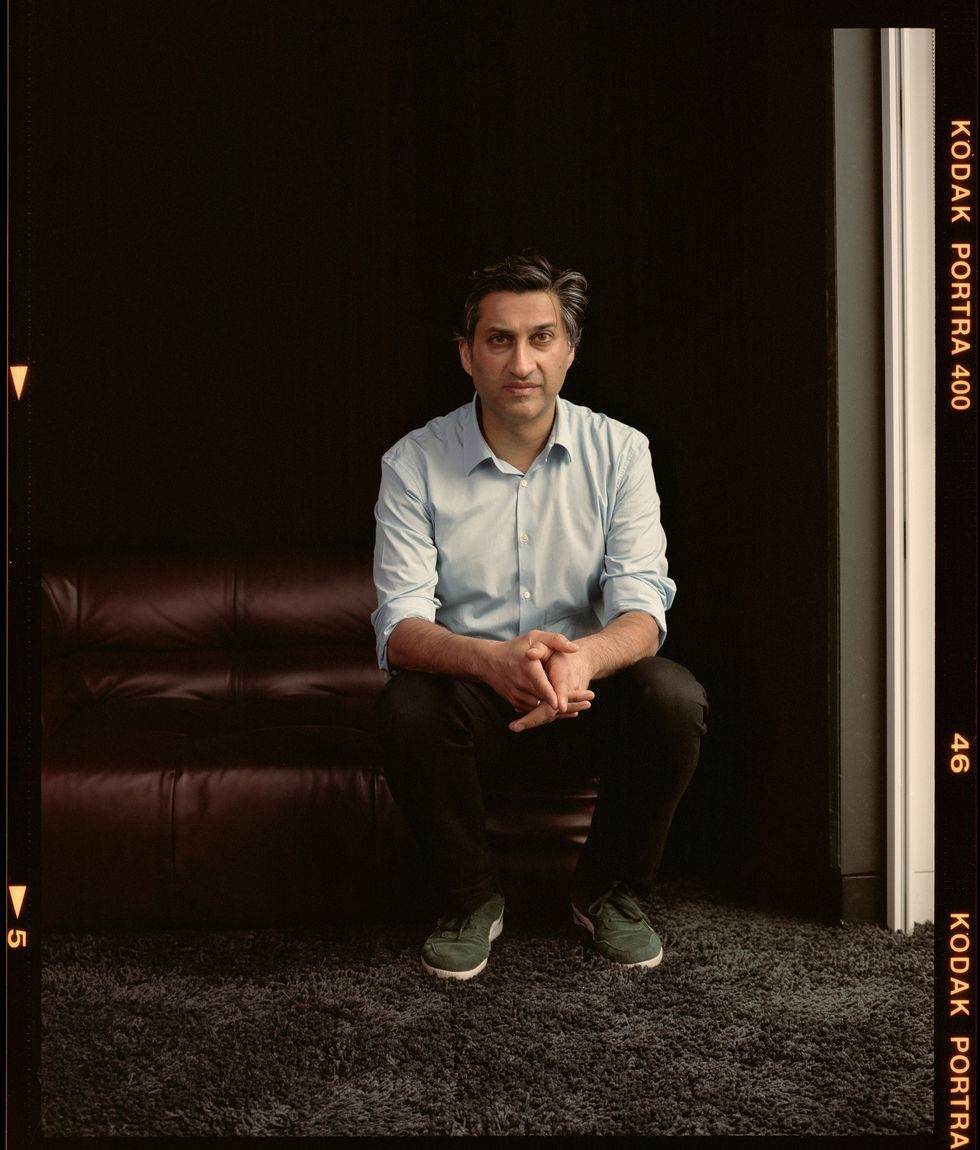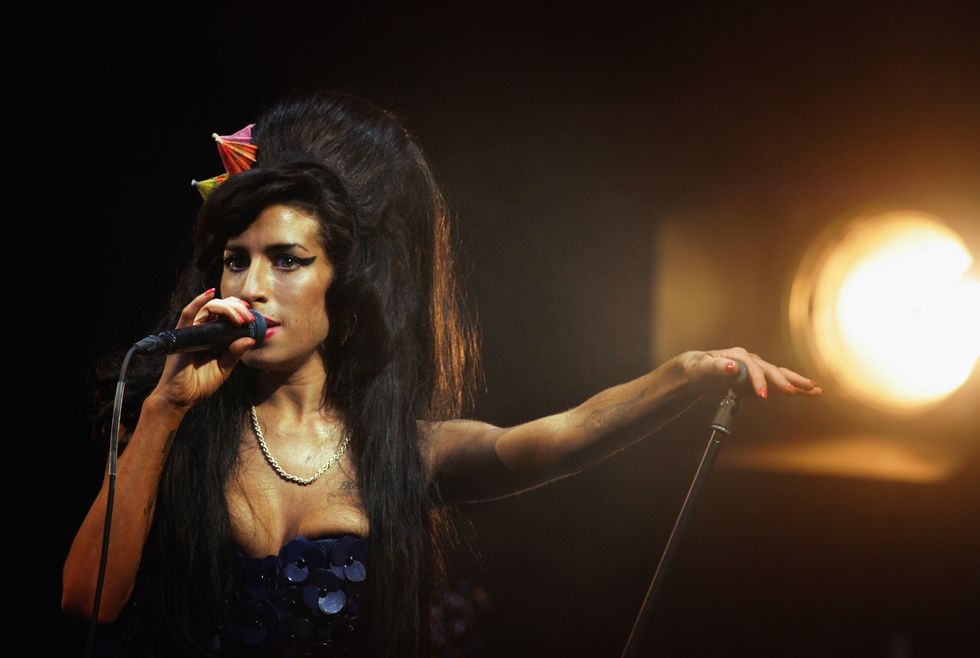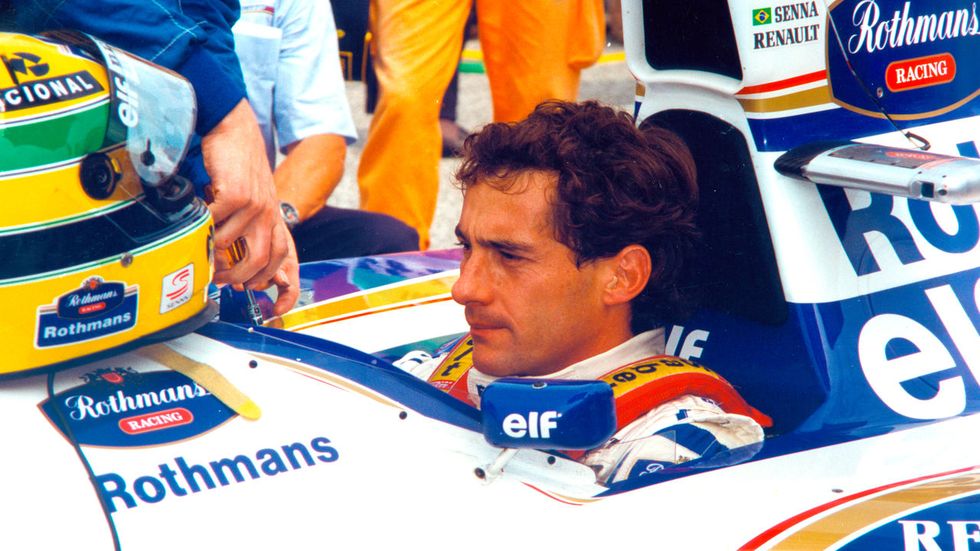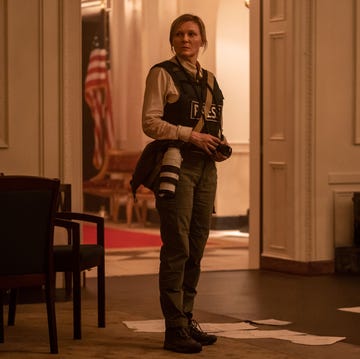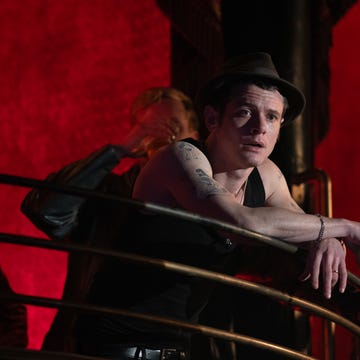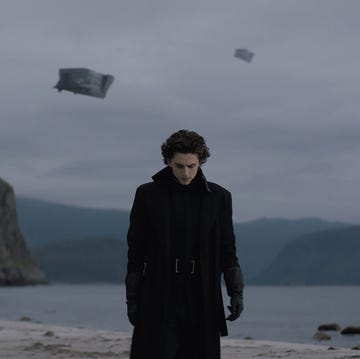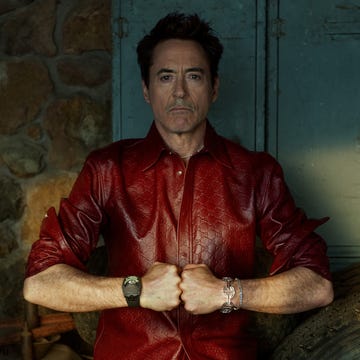Asif Kapadia is speaking at Esquire Townhouse 2019 on 18th October at 8pm. Buy tickets here.
Asif Kapadia’s latest film, Diego Maradona opens with a shot of the back of a very ordinary hatchback as it careens through the streets of Naples. It is 1984, and Diego Maradona, the world’s greatest footballer, then 23 years old, is in the car in front, on his way to the Stadio San Paolo to sign for Napoli from Barcelona in what will be the biggest transfer deal ever made. The camera is in another vehicle which follows closely behind, and its view of the squat little car’s chaotic journey through the crowds, its hazard lights flashing — don’t say you weren’t warned! — serves as a tantalising metaphor for the lively and chaotic story to follow.
Kapadia, who has something of a glittering reputation of his own, is the British film-maker whose last feature-length documentary, Amy (2015), won Best Documentary at the Baftas and Oscars and became the highest-grossing UK documentary ever, knocking into second place his first feature-length documentary, Senna (2010), which also won the Best Documentary Bafta. Kapadia has earned all kinds of praise for his two intense non-fiction works (he’s also had success directing film and TV dramas) which re-examine astonishing lives and, in the cases of singer Amy Winehouse and Formula One driver Ayrton Senna, untimely deaths. Diego Maradona, and not for the first time, will have some weight on his shoulders.
“He’s huge, and I think maybe more well-known around the world than the other two put together, and it’s football, which is bigger than anything,” says Kapadia, 47, sitting in the Kings Cross offices of the PR company that will promote Diego Maradona when it is released this month. Not many people have seen it yet, and Kapadia is excited to be talking about it but also slightly nervy. “It has potential, but you don’t know. You just don’t know.”
When it was announced that Kapadia was turning his attentions to Maradona, it was easy to see why. “The beginning of his life is quite Senna-ish,” he says, “and now it’s become a repetition of latter Amy. He’s the Latin hero who brought pride to a country that had really been suffering, then he’s also got real addiction issues, and becomes a bit of a laughing stock. Weirdly, Diego becomes a mixture of those two films and characters almost.”
Kapadia, who studied film at the Royal College of Art, sees Diego Maradona as the concluding part of a trilogy about prodigies and fame, though unlike Formula One and jazz-pop, this time he approached it with a lifelong devotion to the subject. He is, he admits, “a big football fan, massive”: he grew up in Stoke Newington in north London, not far from the old Arsenal stadium in Highbury, but copied his best friend and started supporting Liverpool. “They were never as good as Arsenal for the last 20 or 30 years almost, but you can’t switch.”
Diego Maradona covers the life of the man so far, but with particular focus on the years he spent at Italian club Napoli, which began with him being heralded as a saviour. Napoli, at the time of his arrival, were huge underachievers who had never won the Serie A league title in their history: Maradona brought new pride to the impoverished city by steering his club to win the league (twice), the Coppa Italia, the Uefa Cup and the Italian Supercup. In the off-season, he captained the Argentinian national team to victory at the 1986 World Cup, during which he scored both the greatest and most controversial goals England have ever conceded (“And everyone’s still going on about it,” says Kapadia, “so it achieved its aim”). He also found time in his busy schedule to befriend the Camorra, father an illegitimate son and develop a monumental cocaine addiction before leaving Italy in disgrace in 1992.
“I guess in the end, everywhere he goes after that is a repeated cycle of his time in Naples, but slightly diminished each time,” says Kapadia. “It became the essence of him, that period.”
Like Kapadia’s other films, Diego Maradona consists entirely of a painstakingly assembled mosaic of archive footage, occasionally overlaid with the voices of key characters from the story including team-mates, coaches and girlfriends. Watching it, like watching the others, is an intense and absorbing experience that shows a cartoonish public figure in a newly human light (the “Hand of God” goal, for example, seems very different when you consider it from the view of an Argentine in the wake of the Falklands War).
“It’s basically taking stuff that already exists, that’s already out there, that you think you’ve already seen, and changing the context,” Kapadia says. “Adding sound, reframing it, or slowing it down, adding text and graphics to make it have a deeper, hopefully, different meaning.”
Kapadia got wind of the existence of a cache of early footage of Maradona that his first agent and childhood friend, Jorge Cyterszpiler (whom Maradona later fired) had commissioned in the hope of making a feature film about him to “sell him to the Americans”. That film was never realised. “Most of the personal stuff, and when you see just him on the pitch and the camera’s behind the goal or next to the pitch, that’s all from a film that Jorge started in 1981 and we finished in 2019,” says Kapadia. “It was really him having this vision and a dream, and then not being able to follow it through.”
There is, of course, one significant difference between this film and those others, and that is that Diego Maradona is alive and kicking, albeit not with his former panache. Kapadia did interview Maradona for the film, slowly wooing him over a number of visits to Palm Jumeirah in Dubai, the artificial island in the Persian Gulf fashioned to look like a palm tree, where he was living at that time “on the second frond on the left”. Kapadia eventually earned Maradona’s trust, but his involvement is lightly worn; his voice drops in only every now again. “Sometimes,” says Kapadia, “the person you’re making the film about isn’t the most reliable witness of their own story.”
Would it have been possible to make this film without Maradona’s involvement? Kapadia doesn’t think so. He had to grant permission to use his image, for one thing, but also because, Kapadia says, “I don’t think anyone else would have spoken to us. The first question everyone who’s ever been near Diego will say is: ‘Is he on board?’ Because if you talk to a journalist and he’s not on board you will hear about it from him.” (At the time of our meeting, Maradona had yet to see the finished film; when I ask Kapadia if Maradona is an intimidating presence, he parries: “He’s quite charismatic. He has got a presence in a way that not everyone does.”)
And what about the ending? Both Amy and Senna have very definite, very tragic, full stops.
“That was one of the reasons to do this, was to not have that ending; to actually have to challenge oneself by saying, it’s going to be harder, he’s still going.” Kapadia came up with a strategy. “Every time I interviewed someone who knew Diego or was a friend of his, one of my questions became: where do you think the story ends? One person quite close to him said something quite dark, which was that he wishes sometimes that after Argentina won the World Cup, when the plane was flying back, it crashed, and it ended there. Because that was the best bit. He achieved his dream.”
Kapadia, who opted for a different ending, shakes his head, as though still digesting it. “I mean, my God.”
Diego Maradona is out now.

Miranda Collinge is the Deputy Editor of Esquire, overseeing editorial commissioning for the brand. With a background in arts and entertainment journalism, she also writes widely herself, on topics ranging from Instagram fish to psychedelic supper clubs, and has written numerous cover profiles for the magazine including Cillian Murphy, Rami Malek and Tom Hardy.
